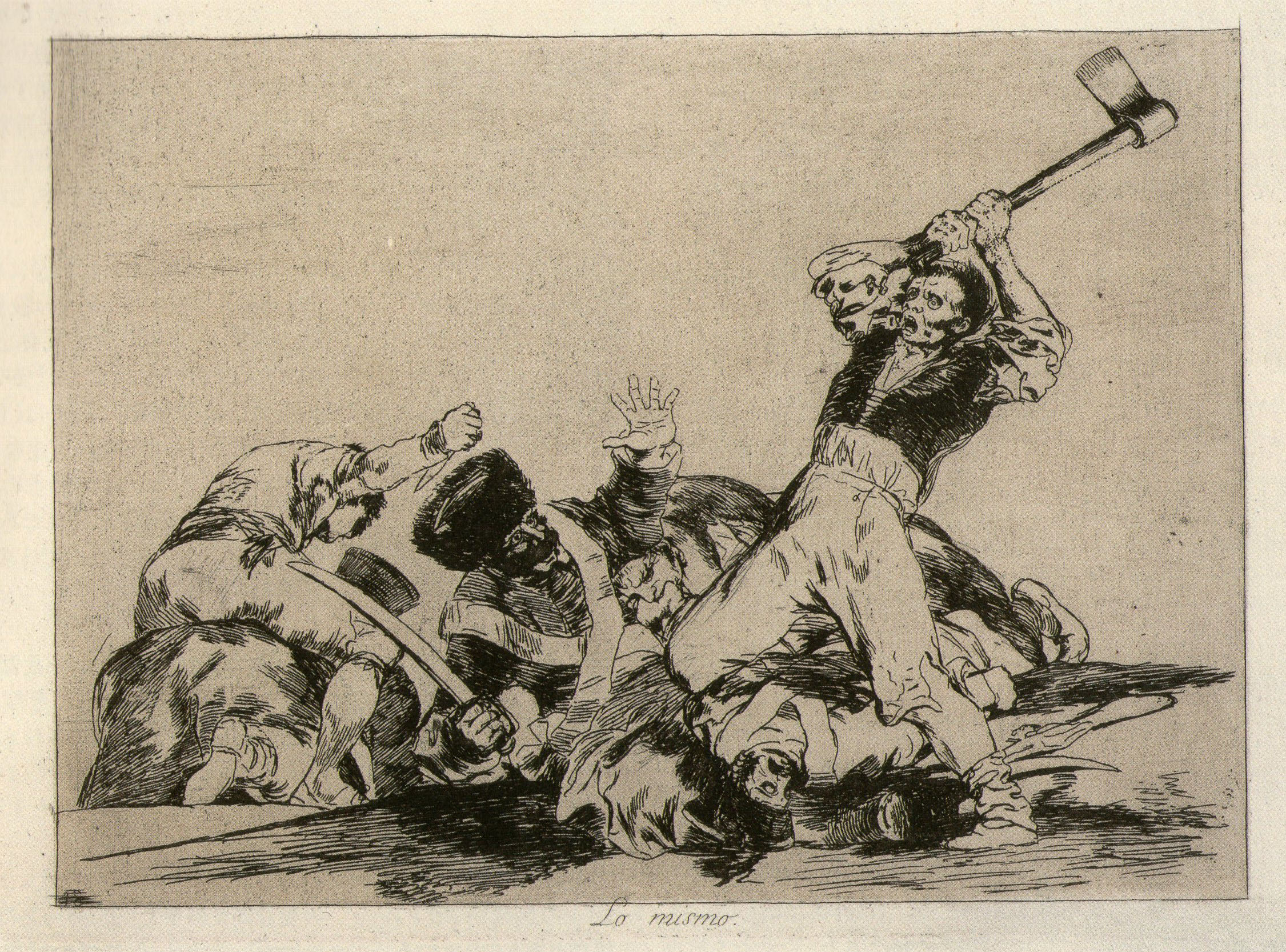On first appraisal, it might seem that the organizers have brought the wrong Maja to Japan for the exhibition "Goya: Lights and Shadows" at Tokyo's National Museum of Western Art.
Of course, it would have been best to have included both versions of the painting, because these works, showing the same mysterious beauty in an identical pose, one naked and one clothed, gain by being shown together. But if only one was to be brought all the way from the famous Prado Museum, then surely it should have been the naked one!
Or should it?
Although "The Clothed Maja" (1800-07) may not provide the same immediate thrill as her naked twin, the fact that she is clothed may at least force some of the men in the audience to exercise their imaginations, which cannot be a bad thing in the context of Francisco de Goya, an artist who both painted what he saw and what he imagined, creating images of beauty and horror.
This exhibition skillfully alternates between these two poles of vision and imagination, which are also symbolized by the terms light and darkness, because Goya's mental inclinations tended strongly toward the dark, sinister, brutal, and occult.
In addition to "The Clothed Maja," the exhibition includes a reasonable number of other oil paintings and preparatory drawings, and a large number of published etchings from his series, "Caprices" (1799) and "The Disasters of War" (1863).
The paintings tell of a rising and successful artist, proud of his well-connected place in high society. One of the points the exhibition makes is that Goya, despite the liberal-progressive myth that has arisen around him, was more of a stakeholder in a Spanish society that was fundamentally hierarchical, traditional and religious.
Although the Majas brought him into conflict with the clerics of the Spanish Inquisition, these paintings were also testaments to the intimacy of his relationship with the aristocracy. They had been painted for Manuel de Godoy, a nobleman who dominated Spanish politics from 1792 until his fall from power in 1808, and were to be hung in his private "cabinet" gallery.
Goya's early paintings, such as "The Parasol" (1777), an airy and lucid work, reveal the influence of Anton Raphael Mengs, the German neoclassical artist who was very influential at the Spanish court during the reign of Charles III (1759-1788). But Goya's style soon asserts itself in his taste for darker or more comic scenes such as "Maja and Cloaked Men" (1777), where we get a sense of Spanish society as a rather exotic world outside the European mainstream.
In the large, official works, such as his excellent portrait of Charles III's successor, "Charles IV in Red" (1789), the painter is obviously serving the wishes of his royal client more than expressing himself, but when we turn to the sketches and etchings at this exhibition, there is no doubt that we are in the presence of Goya's own personality. The man we meet is a witty and acidic observer of his own society, but also a morose character seemingly tormented by an overabundantly dark imagination.
His keen satirical bent is one of the reasons why Goya is often anachronistically viewed as something of a liberal progressive in tune with the ideals of 1789's French Revolution. "Dream of some men who were eating us up," an etching and aquatint from his "Caprices," parodies greedy, parasitical Christian monks. But, if anything, this is a very respectful image compared to some of the others in the series, which show teachers as donkeys and bestial witches, and take a very dark view of relations between the sexes. "All will fall" and "There they go plucked," two etchings from this series, show birdlike male courters snared and literally plucked by a gang of cynical women.
One of the other myths countered by the exhibition is that of Goya the ardent Spanish nationalist. This view is largely based on "The Disasters of War" series, showing the horrors that followed Napoleon's takeover of Spain in 1808 and the popular uprisings that followed. Viewed on its own, a print such as "What courage," which shows a woman firing a cannon because all the men have fallen, suggests that Goya was ready to take up arms himself — but his actions during the war paint a different picture. Rather than joining the Spanish rebellion, Goya remained in his post as court painter in French-controlled Madrid.
Although his depictions of the atrocities of war reveal the brutalities inflicted on the civilian population by the French occupiers, there is a moral ambivalence to most of these works that is best observed in a pair of etchings titled "Rightly or Wrongly" and "The Same." The first shows French troops killing poorly equipped Spanish rebels, while the second shows similar partisans hacking Napoleon's soldiers to death.
Goya's attraction to this kind of subject matter seems more a reflection of his own dark moods and health problems, which included deafness, than any wish to start the early 19th-century equivalent of Amnesty International. Whether it was witches, greedy priests or the brutalities of war, his obsession with the dark side of life comes across as the essence of his personality. The Majas, it seems, were merely work.
"Goya: Lights and Shadows. Masterpieces of the Museo del Prado" at The National Museum of Western Art runs till Jan. 29; admission ¥1,500; open 9:30 a.m.-5 p.m. (Fri. till 8 p.m.), closed Mon. For more information, visit www.nmwa.go.jp.



















With your current subscription plan you can comment on stories. However, before writing your first comment, please create a display name in the Profile section of your subscriber account page.